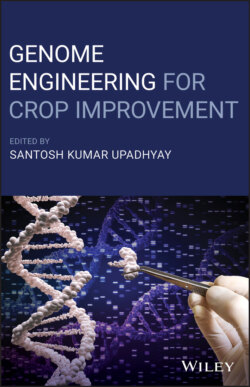Читать книгу Genome Engineering for Crop Improvement - Группа авторов - Страница 37
2.3.5 Sample Preparation
ОглавлениеSample preparation is a highly demanding but crucial step that is directly related to the quality and accuracy of imaging results. Though state‐of‐the‐art imaging tools are available today, the process is still severely limited by slow and demanding sample preparation protocols. In order to keep the anatomy and biochemistry of the cellular components as undisturbed as possible, it is essential that all biochemical and proteolytic processes are inactivated and the structures are immobilized and fixed in space and time by a “fixation step.” Two approaches are normally used to “fix” biological samples: a chemical and a physical one (Dong et al. 2016b). Though chemical fixation is the most common approach for specimen preservation in light and electron microscopy, it is not suitable for spectroscopic analysis where it is essential to obtain the anatomy to be able to retrieve quantitative spatial biochemical information (Perrin et al. 2015). Since chemical fixation can lead to artifacts such as contamination, leaching of mobile elements and modification of biomolecules, cryofixation is accepted as the only reliable fixation method for spectroscopic analysis (Schneider et al. 2002; Vogel‐Mikuš et al. 2014; Perrin et al. 2015; Dong et al. 2016b). The samples must be frozen in such a way that the growth of ice crystals is prevented in a process called vitrification (Scheloske et al. 2004). The current cryofixation workflows for the preparation of plant samples for imaging the elemental distribution (e.g. micro‐PIXE) (Vogel‐Mikuš et al. 2014) include manual cutting of plant material into small pieces, embedding of the pieces in a freezing medium (OCT), rapid freezing by immersing the sample in a cryogen cooled with liquid nitrogen (e.g. isopentane, propane), cryotome sectioning and freeze drying. Due to their hardness, grains can be imbibed (soaked for two to four hours, or more for very hard seeds, at 4 °C) and hand cut with a sharp razor blade to 100–200 μm thick slices, especially when analyzing the samples with MS‐based and FTIR techniques, where OCT could contaminate sections or can interact with the sample composition. Carboxymethylcellulose (CMC), gelatine and their combinations have been successfully used as media compatible with biomolecular imaging (Dong et al. 2016b).
After cutting, freeze‐drying is performed to obtain vacuum‐compatible samples (micro‐PIXE, micro‐MeV‐SIMS) and samples with low water content, which are required in micro‐FTIR. During dehydration, sample shrinkage is often observed, which usually results in an uneven surface, affecting surface spectroscopic techniques such as micro‐FTIR, micro‐Raman and micro‐MeV‐SIMS. Shrinkage can also lead to a mismatch between biochemical and anatomical features (e.g. when plant protoplasts shrink and adhere to the cell wall, it is impossible to distinguish whether the biochemical information originates from the cell wall or from the inner parts of the cell), making biological interpretation extremely difficult (Dong et al. 2016b).
